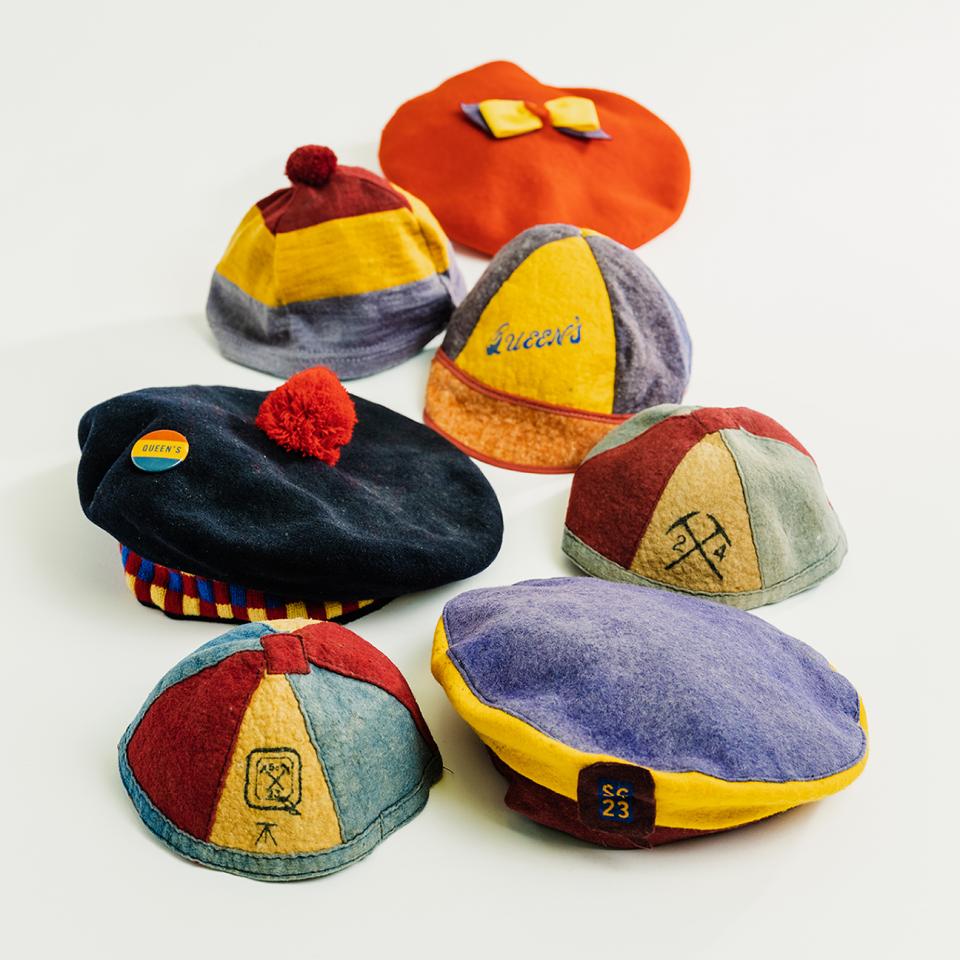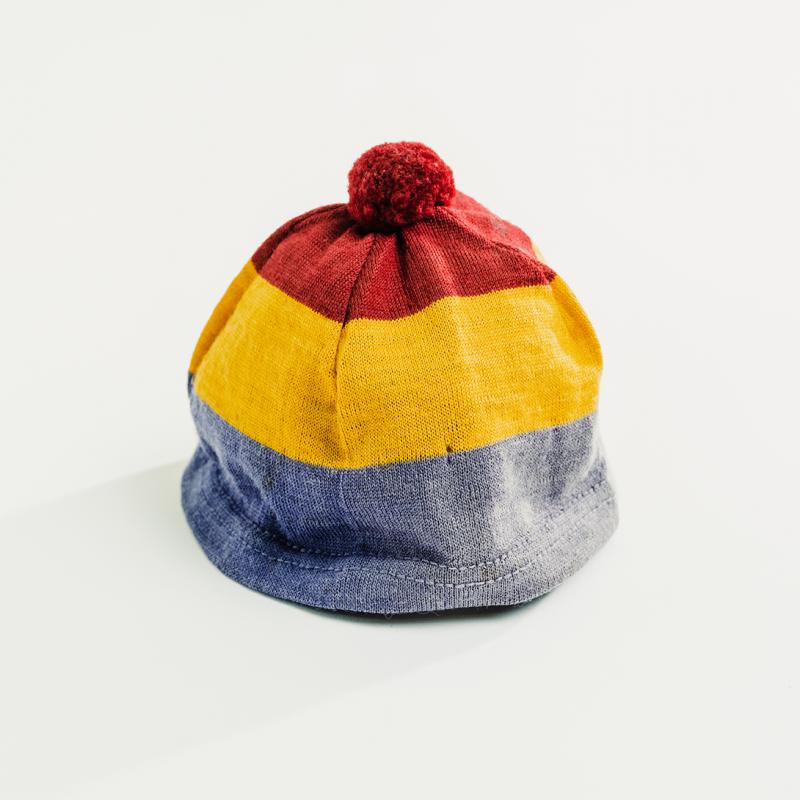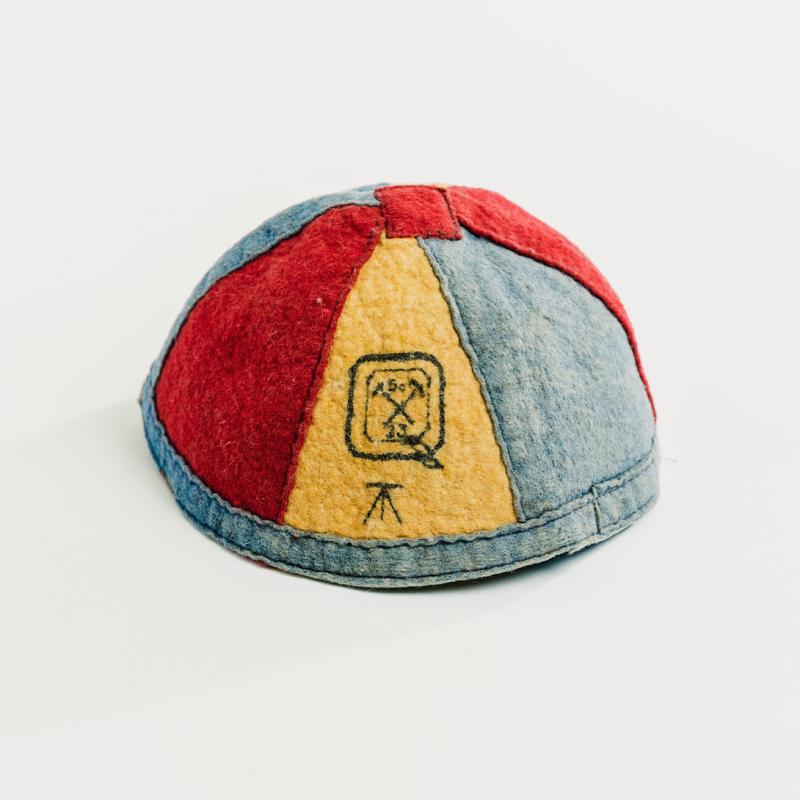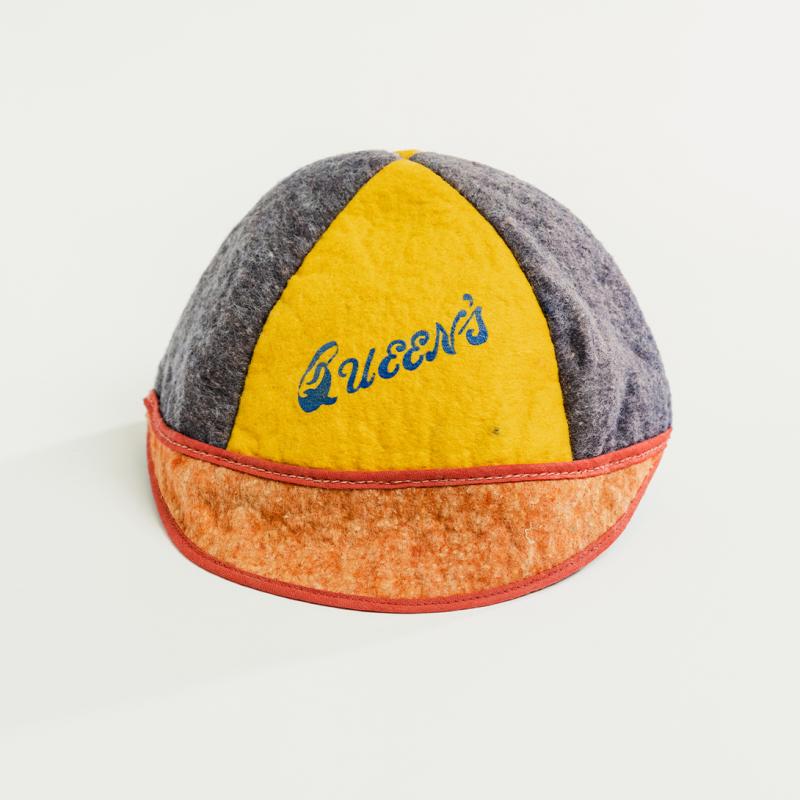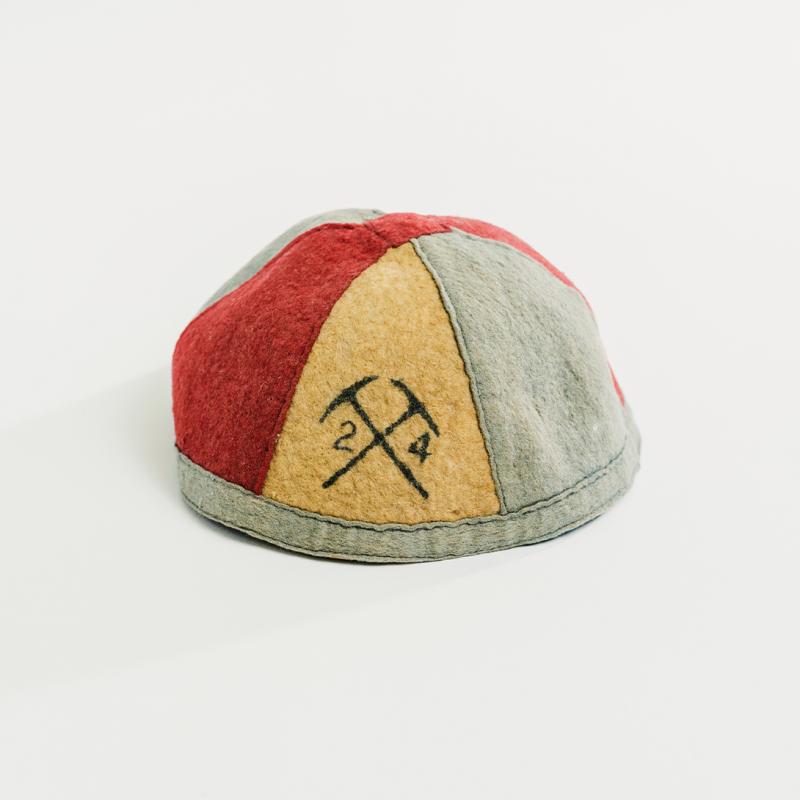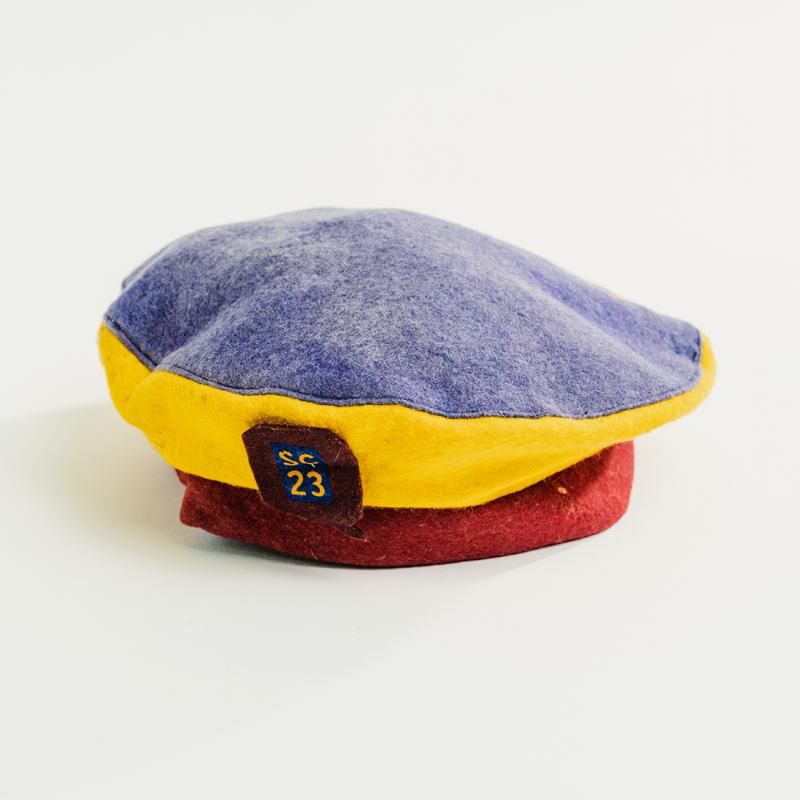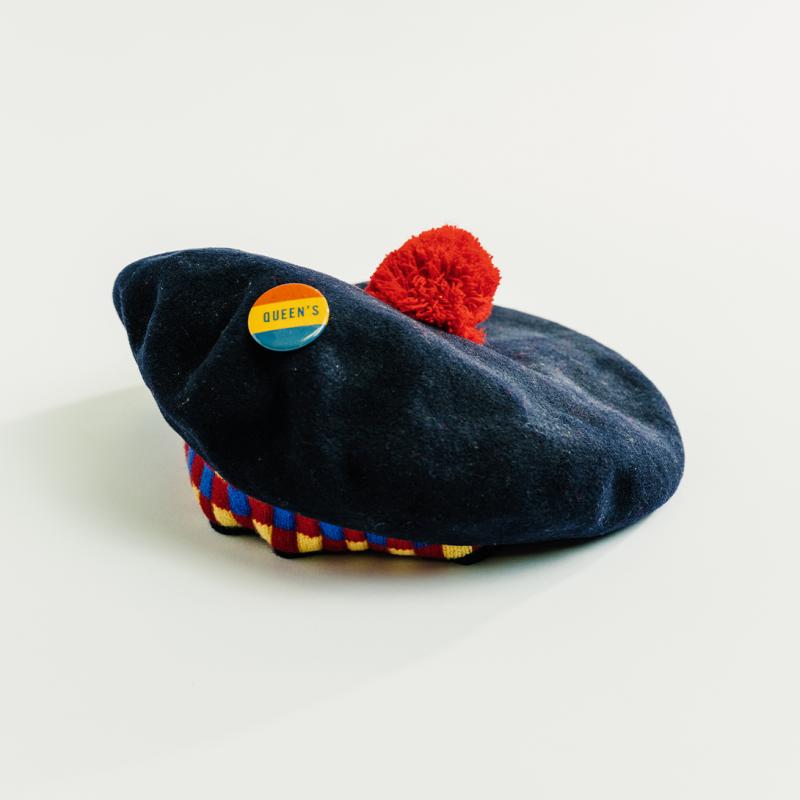Just inside the west wing door of Summerhill is an office much like any other. There are a couple of desks with computers, a big photocopier, filing cabinets. But look behind one of those desks and you’ll find a glass display case that doubles as a window into Queen’s wearable past. Inside the case, neatly arranged on three shelves, are seven hats – each donated by alumni or their families. A couple are the familiar tams handed to every frosh in the fall, but there are also Sc’23 and Sc’24 beanies, a tricolour tuque, and a red, blue, and gold cap you can imagine being worn at a mid-20th-century football game.
As interesting as each chapeau is on its own, when taken together they’re also a symbol of Queen’s clothing tradition and how it has evolved along with the university, says former Queen’s historian Duncan McDowall.
“Queen’s wouldn’t have survived if it clung to old traditions that didn’t move with the times, and so one of the things that strikes me as a historian is the persistence of modified tradition at Queen’s – and you can see that in the stories behind some of this clothing.”
Take the tam, which has been handed out to new Queen’s students for nearly a century. When the Queen’s tam was first introduced, the Alma Mater Society required that freshmen wear it at all times while in Kingston until Dec. 1 (Sundays optional). By the 1980s, earning your Artsci tam required a queasier style of militancy: fondling fish heads or covering yourself in cat food in the basement of Jeffery Hall. But by the end of the decade, as hazing fell out of style, innocent trivia contests replaced gross gauntlets as the means to getting your tam. Today, tams are simply given to frosh – another sign of the evolution of a Queen’s tradition: from aggressive initiations to more welcoming orientations.
